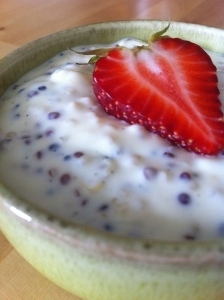Don’t Be Heavy-Handed with “Nutrition” Talk - Teaching Nutrition to Kids
/I had the best time on Friday! I was invited to the Valentine’s Day party at the local elementary school. I brought a variety of fruits and veggies and led an activity where we used cookie cutters to cut out hearts and thread them onto wooden skewers to make cupid’s arrows (thank you Pinterest). Do I have the best job or what?! But was I just playing? No. There’s a method to my madness. I’ve learned something in the (gulp) 20 years that nutrition’s been my world. It’s that teaching nutrition to kids isn’t the way to inspire people to have healthy eating habits. Sure, talking about vitamins, minerals, etc will change what some people eat. There will be the exception that proves the rule. But it truly is the exception. I learned this lesson the hard way. When I was a bubbly, enthusiastic nutrition student, I shared my new-found knowledge with anyone and everyone (whether they asked for my 2 cents worth or not). Guess what? Not surprisingly, most people rolled their eyes at me and went on with their same (unhealthy eating) behavior.
I’ve learned that the most effective way to influence people’s behaviour is to simply serve them delicious, healthy food. And don’t say anything about it.
With kids there is even more opportunity! You see they haven’t had 10, 20, 30 years-of habits that we need to break. With kids, all we need to do is to include healthy foods in fun and everyday activities. To make healthy eating the norm. That’s why I worked to get myself invited to the Valentine’s Day party. Because, it was a fantastic way to infuse a celebration day with healthy food. The kids totally got into it and had a fantastic time. In fact, we hardly had enough fruit to thread on the skewers because they were eating so much of it. I can honestly tell you that they didn’t miss baking cookies one bit.
Creating a positive association with healthy eating is more powerful than knowing that I “should” eat something because it has vitamin so-and-so in it.
Recently a study confirmed my experience. They found that kids were less likely to try a food. And, they rated a food as tasting worse, if they were told that it was healthy.
It’s so tempting to go on and on about WHY kids should eat a healthy food. But do your best to resist the temptation. It’s more effective if you aren’t heavy-handed with the “nutrition” talk.
As the saying goes:
“Actions speak louder than words”.
How do you incorporate healthy eating into fun activities? I'd love you to share in the comments below!
Get my e-newsletter for successful tips to teach kids healthy eating.




















